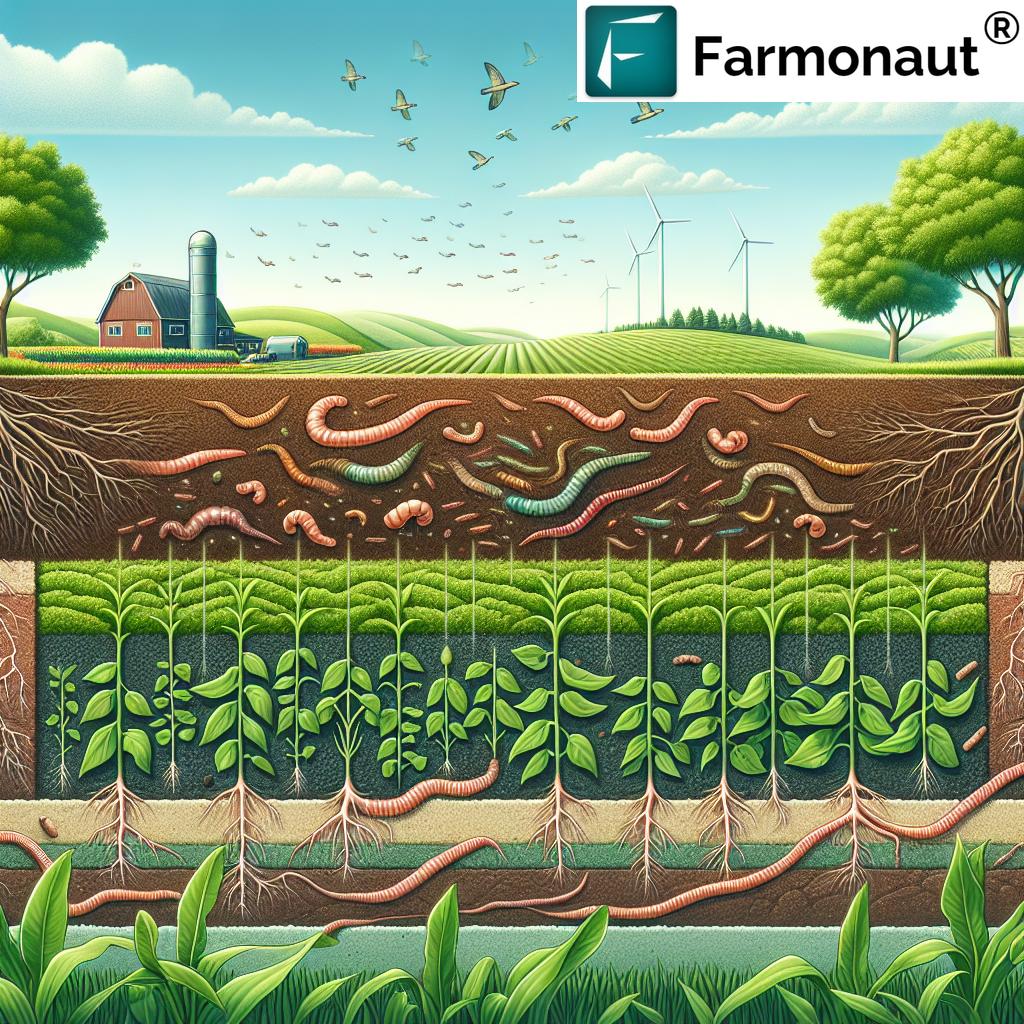Symptoms of Magnesium Deficiency & How to Boost Plants
Why Magnesium Matters in Plant Health
Magnesium (Mg) stands as a vital macronutrient for plants, agriculture, and agricultural productivity. As the central atom in chlorophyll, magnesium is indispensable for photosynthesis—the process that lets plants convert light energy into chemical energy. Without adequate magnesium, this fundamental process is compromised, directly affecting plant growth, health, and yield.
- Enzyme Activation: Magnesium activates numerous enzymes involved in energy transfer, protein synthesis, and nutrient uptake.
- Nutrient Uptake & Transport: It supports movement of nutrients within plants, impacting overall vigor, crop quality, and resistance to stress.
- Protein and DNA Synthesis: Mg is required for protein synthesis and is involved in the activation of enzymes responsible for creating cellular building blocks.
- Energy Production: Magnesium is necessary for the function of ATP—the molecule that stores cellular energy.
Deficiency in magnesium can thus lead to a range of symptoms, decreased crop productivity, and lower food quality.
Causes of Magnesium Deficiency in Soil
Magnesium deficiency in plants typically arises from a combination of soil properties, crop selection, and farm management practices. Recognizing these factors is essential for preventing nutrient imbalance in agriculture and improving plant health.
Key Factors Leading to Magnesium Deficiency
-
Soil Composition and pH:
- Acidic, sandy, or coarse-textured soils often have low cation exchange capacities (CEC), making them prone to magnesium leaching and reducing magnesium availability to crops.
- Acidic soil and nutrient availability are closely linked — lower pH enhances Mg leaching, weakening plant growth (source).
-
Excessive Potassium Fertilization:
- High potassium levels interfere with magnesium uptake as both nutrients compete for the same absorption sites in roots, leading to imbalance and reduced Mg absorption.
-
Elevated Calcium Concentrations:
- High calcium can displace magnesium from soil exchange sites, reducing magnesium availability and uptake by crops.
-
High Nitrogen Application:
- Excessive nitrogen can trigger rapid vegetative growth, increasing crops’ magnesium demand. If not met, symptoms of magnesium deficiency will quickly appear.
-
Crop Type and Susceptibility:
- Certain crops—such as tomatoes, apples, grapevines, raspberries, roses, and rhododendrons—are particularly susceptible to magnesium deficiency, especially in soils prone to leaching or with improper nutrient management.
Symptoms of Magnesium Deficiency in Plants
Recognizing the symptoms of magnesium deficiency early enables growers to correct nutrient deficiencies in soil before they become severe. The symptoms typically manifest first on older leaves due to magnesium’s high mobility within the plant, allowing it to be relocated from older to newer tissues under conditions of low supply.
Common Signs and How They Affect Plant Growth
-
Interveinal Chlorosis:
- “Yellowing” appears between leaf veins while the veins themselves remain distinctly green—a classic symptom.
- Most evident on older leaves, along with a network of green veins and yellowed tissue filling the spaces.
-
Necrosis:
- As Mg deficiency progresses, affected leaves develop brown or dead spots (“necrotic areas”) that may lead to premature leaf drop.
-
Stunted Growth:
- Overall plant growth and vigor are reduced, resulting in smaller, weaker plants.
- Crop yields may decrease by up to 30–50% in severe cases.
-
Leaf Curling:
- Older leaves may curl upwards (or occasionally downwards), further reducing photosynthetic area.
-
Reduced Fruit Quality:
- Severely deficient plants often produce smaller, harder, and woodier fruits, undermining crop quality and marketability.
-
Root Issues:
- Root growth slows, making plants more susceptible to drought and other nutrient stresses.
How Magnesium Deficiency Leads to Reduced Photosynthesis
Magnesium deficiency severely impairs magnesium uptake and photosynthesis. Interveinal chlorosis disrupts chlorophyll structure and function, reducing the efficiency by up to 25%. This impacts energy transfer within cells, resulting in slower growth, poor yields, and lower quality fruits.
Examples of Susceptible Crops
- Tomatoes, especially in acidic or sandy soils
- Apples and grapevines, commonly affected in regions with intensive potassium application
- Raspberries, roses, and rhododendrons in ornamental horticulture
Symptoms of Magnesium Deficiency vs. Healthy Plants Table
| Plant Aspect | Symptom in Magnesium Deficient Plants | Appearance in Healthy Plants | Estimated Severity / Prevalence |
|---|---|---|---|
| Leaf Color | Yellowing between veins (interveinal chlorosis), especially on older leaves | Uniform deep green coloration | 60% of affected plants show yellowing |
| Leaf Edge Condition | Brown margins, curling of leaf edges | Smooth, flat edges | 30–40% (moderate severity in advanced stages) |
| Growth Rate | Stunted, reduced growth, smaller plants | Vigorous, regular growth | 10–30% lower than healthy plants |
| Fruit/Yield Quality | Small, woody, poor-quality fruits; premature fruit drop | Standard size, healthy, flavorful fruits | 30–50% yield reduction possible |
| Root Development | Slower root growth, less branching, increased susceptibility to drought | Strong, well-branched roots | 20–40% plants with poor roots |
Soil Testing for Magnesium Levels & Farm Management
Soil testing for magnesium levels is the foundation of crop management for optimal productivity. By evaluating both magnesium and soil pH, farmers can prevent nutrient imbalances in agriculture and make informed fertilization decisions.
- Soil analysis reveals the actual magnesium concentration and helps determine if deficiency is likely due to acidic soil or low-CEC (cation exchange capacity) soils.
- Regular testing allows targeted application of magnesium fertilizers for crops, rather than relying on guesswork.
- Soil pH between 6.0–7.0 is ideal to enhance magnesium availability. Below pH 5.5, leaching is accelerated.
- Combine with monitoring of potassium, calcium, and nitrogen to maintain proper nutrient balance.
How Farmonaut Enhances Soil and Crop Monitoring
At Farmonaut, we empower growers worldwide with advanced satellite-based farm management tools designed to monitor crop health, soil moisture, and nutrient status in real time. Our platform enables:
- Multispectral Satellite Crop Health Monitoring: Receive precise insights into crop vitality and health, so nutrient deficiencies can be addressed before extensive yield loss occurs.
- AI-Powered Jeevn Advisory System: Get personalized, real-time crop management recommendations including when and how to apply magnesium fertilizers for crops, correct nutrient deficiencies in soil, and optimize yields.
-
App & API Access: Monitor your fields anytime, anywhere on our mobile or web apps.
For developers, integrate Farmonaut’s satellite data into your own systems with our satellite weather API (API Developer Docs).
Management & Correction: How to Boost Plants & Prevent Deficiency
Addressing magnesium deficiency requires a targeted, multi-pronged approach to improve magnesium uptake and restore crop health. Here’s how to boost your plants and prevent recurrence:
- Soil Testing: As stated earlier, test for magnesium levels and pH. Testing identifies the magnitude of deficiency and guides corrective practices.
-
Apply Magnesium Fertilizers:
- Use Epsom salts (magnesium sulfate): Fast-acting, water-soluble, suitable for soil application or foliar sprays.
- Use dolomitic lime: Great for acidic soils, as it raises pH while adding Mg and Ca.
-
Incorporate Organic Matter:
- Add high-quality compost or manure to improve soil structure and magnesium retention—especially effective in sandy or low-CEC soils.
-
Balance Fertilizer Application:
- Prevent excessive potassium or calcium inputs, which can suppress magnesium uptake. Balance nutrients based on soil test results.
-
Maintain Optimal Soil pH:
- Keep pH above 6.0 if possible. Use agricultural lime or dolomitic lime for acid soils to enhance magnesium availability.
-
Strategic Crop Selection & Rotation:
- Choose varieties less prone to magnesium deficiency in regions with recurrent issues.
- Implement crop rotation to maintain soil health and avoid nutrient depletion.
-
Proper Irrigation:
- Prevent waterlogging (which impairs nutrient uptake) and over-irrigation (which accelerates leaching of magnesium from root zones).
Best Timing and Application Methods
- Foliar Sprays: Quickest relief for crops already showing symptoms of magnesium deficiency; use Epsom salts at rates of 1–2% solution.
- Soil Incorporation: Corrects long-term deficiencies; mix granular or powdered magnesium fertilizers into the upper 10–20cm of soil.
- During Crop Establishment: For susceptible crops (e.g., tomatoes), apply magnesium fertilizers at planting, especially in known problematic soils.
Best Practices for Magnesium Fertilization and Crop Productivity
- Use Correct Sources: Epsom salts (magnesium sulfate) and dolomitic lime are the two most reliable choices for improving plant growth with magnesium.
- Application Rates: Base all applications on soil test data. Typical rates range from 20–50 kg/ha of MgO for moderate deficiencies, but always monitor crop response.
- Split Applications: Especially important for sandy or low-CEC soils, splitting the dose minimizes leaching and maximizes root zone availability.
- Foliar Feeding: Ideal for rapid correction in high-value crops and during the peak period of magnesium demand (flowering, fruit set).
Integrate Organic and Biological Practices
- Cover Cropping: Use green manures and legumes that cycle nutrients and add organic matter.
- Regular Addition of Organic Matter: Mulching, compost, and well-rotted manure improve both short- and long-term magnesium and water retention in soils.
Monitor and Adjust for Long-Term Health
- Track crop performance and symptoms season by season to identify trends.
- Regularly retest soils and adjust the fertilization plan as needed to avoid nutrient build-up or new deficiencies.
- Use our satellite and AI tools to spot invisible signs of magnesium or other nutrient deficiencies before physical symptoms appear.
Leveraging Farmonaut for Advanced Crop Management
At Farmonaut, we help you prevent, detect, and address magnesium and other nutrient deficiencies through cutting-edge technology that supports the entire crop lifecycle:
- Blockchain-Based Traceability: Track your crops from field to processor to consumer, ensuring transparency and building confidence in your produce (Learn More).
- Fleet and Resource Management: Efficiently manage field operations, minimize downtime, and improve the logistics of fertilizer, water, and crop input delivery (See Fleet Tools).
- Satellite-Driven Crop Loan & Insurance Verification: Secure better access to financing and protect your investment with automated, data-driven field verification (See Details).
- Mobile, Web & API Monitoring: Instantly access satellite images of your farm, field health metrics, and timely advisories for optimizing magnesium and other nutrient management.
Frequently Asked Questions (FAQs)
-
Q: What are the earliest symptoms of magnesium deficiency in plants?
A: Interveinal chlorosis (yellowing between veins) on older leaves is typically the first sign, followed by stunted growth and leaf curling as the condition progresses. -
Q: How can I quickly correct magnesium deficiency?
A: Use a foliar spray of Epsom salts (magnesium sulfate) at 1–2% concentration for immediate relief, and apply granular magnesium fertilizer to the soil for long-term correction. -
Q: What soil types are most likely to develop magnesium deficiency?
A: Acidic, sandy, or coarse-textured soils with low cation exchange capacity tend to suffer most from magnesium deficiency due to higher leaching rates. -
Q: Should I always use dolomitic lime to correct magnesium deficiency?
A: Dolomitic lime is effective in acidic soils as it raises pH and supplies both calcium and magnesium. However, always test your soil before application to avoid excess calcium interfering with Mg uptake. -
Q: How does Farmonaut help with nutrient management?
A: Our satellite-powered tools and AI-based advisory systems detect early signs of deficiencies, provide targeted recommendations, and help farmers manage nutrient programs efficiently for the best yields. -
Q: Can over-fertilizing with potassium cause magnesium deficiency?
A: Yes, high potassium levels in soil can interfere with magnesium uptake, increasing the risk of magnesium deficiency even if soil magnesium is adequate. -
Q: Is magnesium deficiency common in all crops?
A: No, it is most common in fast-growing vegetables, fruit trees (like tomatoes, apples, grapevines), and certain ornamentals, especially in light or acidic soils.
Conclusion
Magnesium deficiency in plants is an often-overlooked issue that can cause profound losses in crop yield and quality. By understanding the role of magnesium, recognizing the early symptoms, adopting best fertilization and soil management practices, and leveraging technology-driven insights, farmers can safeguard the productivity and sustainability of their crops and soils.
At Farmonaut, our goal is to provide precision, affordability, and actionable insights to farmers everywhere. Using satellite-driven data, AI-based advisory, and field management solutions, we empower agricultural communities to proactively address magnesium and other nutrient deficiencies—ensuring stronger crops, improved quality, and a healthier planet.
Get started now with Farmonaut for smarter agriculture: monitor, analyze, and boost the health of your plants and soil!












